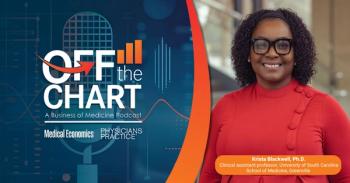
Ask the Right Questions on Patient Satisfaction Surveys
Successful practices make it a priority to assess patient satisfaction regularly. Here's how to improve satisfaction scores and boost patient ratings.
Medical practices have a long history of working within a fee-for-service payment model. But that's in the process of changing. By 2017, practices will be required to conduct and report
Luallin is a San Diego-based consultant/partner with SullivanLuallin Group. Her firm specializes in helping medical practices develop strategies for assessing and improving patient satisfaction scores and maintaining service quality programs.
She recently gave Physicians Practice a preview of her presentation on evidence-based service strategies at the
Physicians Practice:Tell us about your presentation for MGMA14.
Meryl Luallin: We did an analysis of [our patient satisfaction survey] database both by specialty … and primary care. Then we performed a regression analysis which is used to identify the key drivers; the questions in the survey that are most likely to boost the ratings on certain other questions.
The typical [things] that [practices] want to know are how satisfied are their patients - the overall satisfaction with the practice - and, this is important, the likelihood the patient is to refer friends and neighbors to that practice.
My presentation is geared toward telling people what they can do to improve those questions to drive ultimate outcomes.
PP: Should practices create their own patient surveys?
ML: The fact is fewer practices today are using home-grown surveys. More of them are using surveys that have been vetted [by consultants] … or they are using surveys that are endorsed by the federal government. The interesting thing is that … the typical survey has a lot of questions. And those questions are very useful. But you don't know which question is the most important to focus on.
I'll give you a quick example. The lowest rated area across the country in our database is satisfaction with parking. … But actually, that is not a key driver of overall satisfaction with the practice, or likelihood to recommend [it to other patients]. There are other more important questions on the survey that have much greater influence on those two [metrics], not the least of which is the helpfulness of the receptionist and … the provider's willingness to listen carefully to what the patient has to say.
PP: What should physicians know about CG-CAHPS?
ML: There's a major difference between the way that most people have been conducting surveys and [CMS' surveys]; the rating scale is the difference. I can ask you, "How would you rate waiting times in the exam room?" And the typical rating scale is: I would rate it excellent; very good; good; fair; or poor. The CG-CAHPS and the H-CAHPS [Consumer Assessment of Healthcare Providers and Systems - Hospitals] surveys have a different rating scale. They say, "How often in the last 12 months did you wait more than 15 minutes in the exam room?" And the rating scale is: always; sometimes; usually; never.
The reason that [the rating scale] is different is because the government wants to know what [the patient's] absolute experience was, not what [their] perception was. So what we have done for our clients, we are helping them to transition from the old, typical satisfaction survey to the CG-CAHPS survey by sharing with them the CG-CAHPS questions, the new rating scale, and including and incorporating some of the older questions that have to do with perception of [patient] experience.
Luallin has provided both
PP: What would you want practices to take away from your presentation?
ML: That there are a very few basic strategies that will ensure that your patients rate you high, and likely refer you to others. It is an easy acronym to remember, it's CLEAR, and in my presentation I'll give [attendees] techniques that go with that. The C is connect, the L is listen, the E is explain, the A is ask (there's certain questions that every doctor needs to ask, like "Did I answer all your questions?"), and the R is reconnect. People coming away from the session will understand that it is easy to do those five things. They take no more time or effort, and they will see their survey scores increase.
Luallin's session, "Evidence-based Service Strategies That Pay Off," will be held on Mon., Oct. 27, 2014, from 10:15 a.m. to 11:15 a.m.
Newsletter
Optimize your practice with the Physicians Practice newsletter, offering management pearls, leadership tips, and business strategies tailored for practice administrators and physicians of any specialty.








